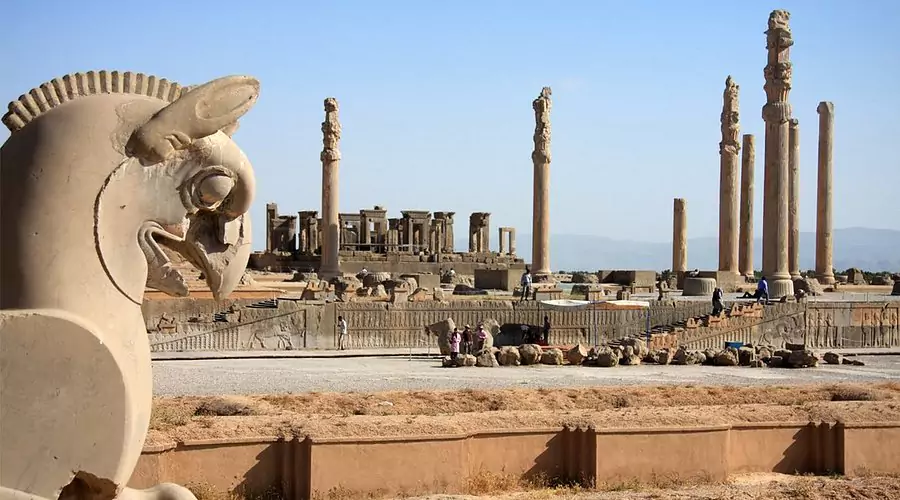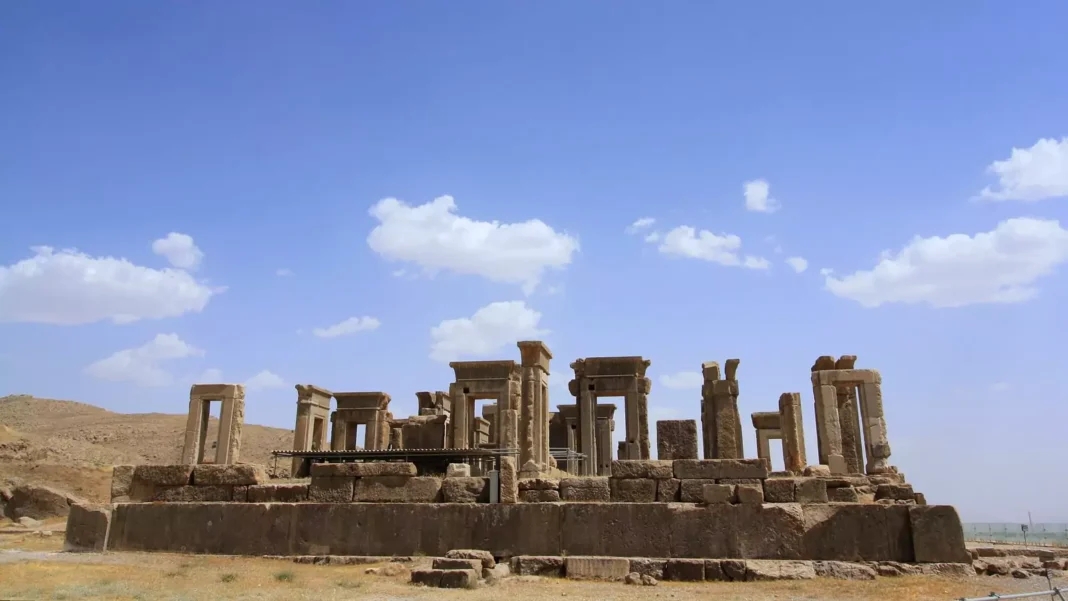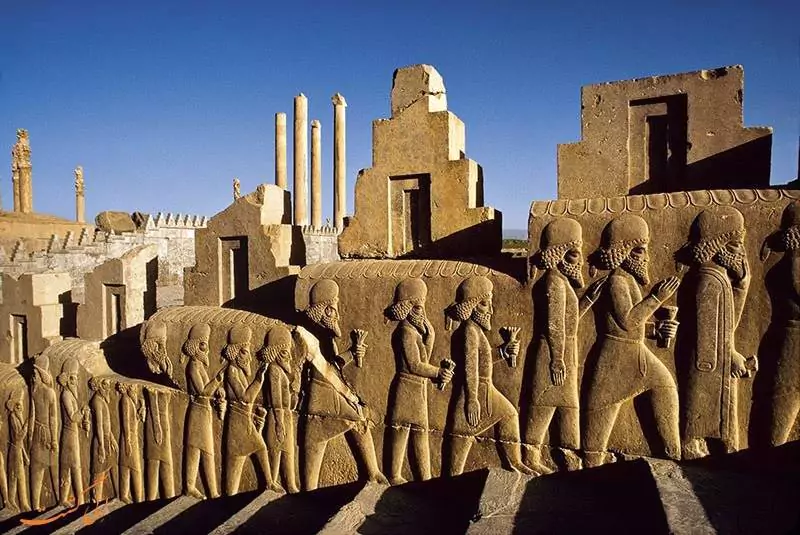Persepolis was the ceremonial capital of the Achaemenid Empire. It stands as a testament to the grandeur of one of the world’s earliest civilizations. This UNESCO World Heritage Site is in modern-day Iran. Specifically, it offers a captivating glimpse into the history and architecture of the Persian Empire, which once dominated the ancient world.
This guide will take you on a journey through time. First, explore the history of Persepolis. Then, discover its impressive structures. Finally, learn about its cultural significance. Whether you love history or architecture, Persepolis promises an unforgettable experience. Indeed, even if you are simply curious about the ancient world, Persepolis will amaze you.
Unveiling the History of Persepolis
The Rise of an Empire: Founding of Persepolis
Darius I founded Persepolis around 518 BC. He was the Great King of the Achaemenid Empire. He wanted a magnificent city. It would serve as a ceremonial capital. In other words, it would be a place to celebrate the empire’s power and achievements. Construction continued under his successors. Xerxes I and Artaxerxes I continued his vision. As a result, Persepolis became a symbol of imperial authority and architectural brilliance.
A City of Grandeur: The Purpose of Persepolis
Persepolis was not a typical capital city. It was not a primary administrative center. Nor was it a bustling metropolis. Instead, it was a ceremonial city. It hosted grand festivals and royal ceremonies. Delegations from across the vast empire came to Persepolis. Furthermore, the city’s impressive structures showcased the empire’s wealth and power. They were adorned with intricate reliefs and sculptures.
The Fall of Persepolis: Alexander’s Conquest
Alexander the Great conquered Persepolis in 330 BC. This occurred during his campaign against the Achaemenid Empire. The city was plundered. Historical accounts say it was set ablaze. Consequently, the destruction of Persepolis marked the end of an era. The Achaemenid Empire fell. The Hellenistic period in Persia began.
Exploring the Architectural Wonders of Persepolis
The ruins of Persepolis showcase the architectural ingenuity of the ancient Persians. The city was built on a vast terrace. It was elevated above the surrounding plain. This created a sense of grandeur and authority.
The Gate of All Nations
The journey into Persepolis begins at a monumental entrance. This is the Gate of All Nations. Colossal statues of mythical creatures guard it. This gateway symbolized the empire’s vast reach. Essentially, it welcomed delegations from all over the Achaemenid world.
- Tip: Imagine the processions. Dignitaries and envoys from diverse cultures once walked this path. They brought tributes and gifts to the Persian court.
The Apadana Palace: The Heart of Persepolis
The Apadana Palace is the largest structure in Persepolis. It is also the most magnificent. It served as the audience hall of Darius I. Its massive columns are adorned with carvings. These carvings depict animals and mythical creatures. The columns supported a vast roof. This roof once sheltered the king and his court. Moreover, the palace’s grand staircases are decorated with reliefs. They show tribute bearers from different nations. This offers a glimpse into the empire’s diversity.
- Tip: Study the reliefs on the Apadana Palace staircases. Each delegation has unique attire. They bear gifts characteristic of their region. This shows the cultural diversity of the Achaemenid Empire.
The Throne Hall (Hundred-Column Hall)
The Throne Hall is another impressive structure. It is also known as the Hundred-Column Hall. It was a reception hall for large gatherings and ceremonies. The hall’s massive columns created a sense of awe. There were once a hundred columns.
- Tip: Imagine the hall filled with people. Dignitaries, soldiers, and courtiers witnessed the splendor of the Persian king.
The Treasury
The Treasury at Persepolis was the royal storehouse. It held vast quantities of precious goods. These came from across the empire. They included gold, silver, and other valuables. Much of the treasure was looted. This happened during Alexander’s conquest. Nevertheless, the remaining ruins still convey the empire’s wealth.
- Tip: Consider the logistical challenges. Managing such a vast treasury in the ancient world was difficult. The Treasury at Persepolis highlights the sophisticated administrative systems.
The Royal Tombs
The Achaemenid kings were laid to rest in tombs. These were elaborate rock-cut tombs. They were carved into the cliffs near Persepolis. These tombs are adorned with reliefs and inscriptions. Therefore, they offer a glimpse into the beliefs of ancient Persia. Learn about their rituals surrounding death and the afterlife.
- Tip: Visit the tombs of Artaxerxes II and Artaxerxes III. They are located a short distance from Persepolis. These tombs provide valuable insights into their beliefs. Learn about the funerary practices of the Achaemenid kings.
Persepolis Today: A Window into the Past
Today, Persepolis is a powerful symbol. It represents Iranian national identity and cultural heritage. As such, the site attracts visitors from around the world. They come to marvel at its wonders. They learn about its history.
Persepolis Museum
The Persepolis Museum is near the entrance to the site. It houses a collection of artifacts. These were recovered from the ruins. These artifacts provide further insights. Learn about the daily life and culture of the people of Persepolis. The artifacts include pottery, tools, and sculptures.
- Address: Persepolis Archaeological Site, Marvdasht, Fars Province, Iran
- Hours: Daily 8:00 AM – 5:00 PM (subject to change)
- Contact: +98 71 4222 2551
Preservation and Conservation Efforts
Persepolis is a UNESCO World Heritage Site. It was designated in 1979. Since then, significant efforts have been made. The goal is to preserve and protect Persepolis. Archaeologists and conservators work to stabilize the ruins. They prevent further deterioration. This ensures that this ancient wonder remains for future generations.
- Tip: Respect the site and its ruins. Stay on designated pathways. Avoid touching or climbing on the ancient structures.
Planning Your Visit to Persepolis
Getting to Persepolis
Persepolis is approximately 60 kilometers (37 miles) from Shiraz. Shiraz is a major city in southern Iran. You can reach Persepolis in several ways:
- Taxi: Hiring a taxi from Shiraz is convenient.
- Tour: Joining a guided tour from Shiraz is a great option. You can learn about the history of Persepolis.
- Bus: Public buses operate between Shiraz and Persepolis. However, they may be less frequent.
Best Time to Visit
The best time to visit Persepolis is during the spring and autumn. This is when the weather is pleasant. Spring is from March to May. Autumn is from September to November. Summers can be very hot. Winters can be cold and rainy.
Tips for Visiting
- Dress modestly: Dress modestly at all historical and religious sites in Iran. This means covering your arms and legs. Women are required to wear a headscarf.
- Wear comfortable shoes: You will walk a lot. The terrain is uneven. Comfortable shoes are essential.
- Bring water: It’s important to stay hydrated. This is especially true during the hotter months.
- Hire a guide: A knowledgeable guide can enhance your experience. They provide historical context and insights.
- Respect the site: Help preserve this ancient wonder. Stay on designated pathways. Avoid littering.
Persepolis: A Timeless Treasure
Persepolis is a timeless treasure. It shows the ingenuity and artistry of the ancient Persian civilization. It also shows their power. Its monumental ruins and intricate carvings are captivating. Its historical significance offers a journey through time. Ultimately, visiting Persepolis provides a deeper appreciation. You will learn about the cultural heritage of Iran. You will learn about the legacy of the Achaemenid Empire.













